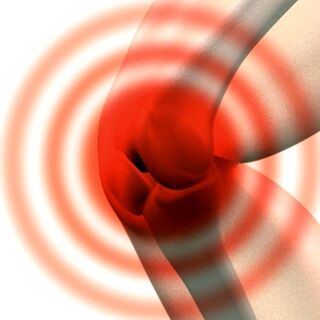Catastrophizing
The Domino Effect of Daily Pain Catastrophizing
Catastrophizing pain can lead to less movement and more catastrophic thinking.
Posted August 26, 2020 Reviewed by Hara Estroff Marano

Catastrophizing chronic pain first thing in the morning can lead to a domino effect that results in less physical activity and more sedentary behaviors, according to a new study by researchers from Pennsylvania State University and Stanford University. The report, still in press (Zhaoyang, Martire, & Darnall, 2020) ,was recently published online in the journal PAIN.
For the study, Ruixue Zhaoyang and Lynn Martire of Penn State along with Beth Darnall of Stanford analyzed data from 143 people with knee osteoarthritis who kept an electronic daily diary for 22 days and also wore an accelerometer (fitness tracker) that monitored their daily amounts of moderate-to-vigorous physical activity (MVPA) and sedentary behavior.
According to the authors, people who catastrophize their pain made comments in their daily diary such as: "The pain is terrible and is never going to get any better" or "I can't stand the pain anymore." Such thinking can create a downward spiral of experience that allows pain to snowball out of control. For example, once someone starts avoiding daily exercise, they're more likely to experience depressive symptoms and increased sensitivity to pain, which leads to more time spent sitting (or in bed) and less and less time spent moving.
The researchers found that people who catastrophized their pain and felt an exaggerated sense of hopelessness and helplessness first thing in the morning tended to be less physically active throughout the day. In their paper, Zhaoyang, Martire, and Darnall explain that "more time spent in sedentary behavior, in turn, contributed to greater pain catastrophizing the next morning."

As part of a domino effect, daily pain catastrophizing was correlated with an uptick in pain catastrophizing and increased sedentary behavior the following day, and the day after that, and so on. The researchers speculate that finding ways to minimize pain catastrophizing could be a valuable therapeutic target for breaking chronic pain's vicious cycle of increased sedentarism and reduced mobility.
"Pain catastrophizing can kick-start a potentially harmful cycle—greater pain catastrophizing in the morning leads to avoidance of physical activity, which in turn worsens catastrophizing about pain on the following day," Martire said in a news release.
"Staying physically active is one of the most important self-management strategies for chronic pain patients," Martire added. "However, many chronic pain patients avoid physical activities that they are actually capable of doing. Our study focused on one critical psychological factor that may explain why patients avoid physical activity despite its importance for pain management: their catastrophic thinking about their pain."
"Reducing daily pain catastrophizing may help older patients to be more active and less sedentary on a daily basis," Zhaoyang said in the news release. "This could help improve their chronic pain condition, physical function, and overall health, and reduce the possibility of hospitalization, institutionalization, and healthcare costs in the long term."
Interestingly, the researchers found that the detrimental impact of catastrophizing pain appeared to be independent of actually experiencing pain. "In other words, how patients think about their pain, rather than the level of experienced pain, had a more powerful impact on their daily physical activity," Zhaoyang said.
"Our study demonstrated that patients' catastrophizing thinking can change from day to day and can be modified by their everyday activity behavior," Martire concluded. "Future interventions may get better results from using mobile technology to monitor patients' activity levels in everyday life and provide just-in-time adaptive interventions targeting patients' pain catastrophizing to reduce their sedentary behavior."
Although this study focused on osteoarthritis and more research is needed to replicate these findings in diverse populations, the effect created by daily pain catastrophizing is likely a vicious cycle experienced by patients with other types of chronic pain.
Future research that identifies practical ways to curb catastrophic thinking first thing in the morning can render people with chronic pain more likely to seek physical activity throughout the day and break the daily pain catastrophizing cycle.
References
Ruixue Zhaoyang, Lynn M. Martire, Beth D. Darnall. "Daily Pain Catastrophizing Predicts Less Physical Activity and More Sedentary Behavior in Older Adults With Osteoarthritis." PAIN (First available online: June 15, 2020 — Volume Articles in Press) DOI: 10.1097/j.pain.0000000000001959




